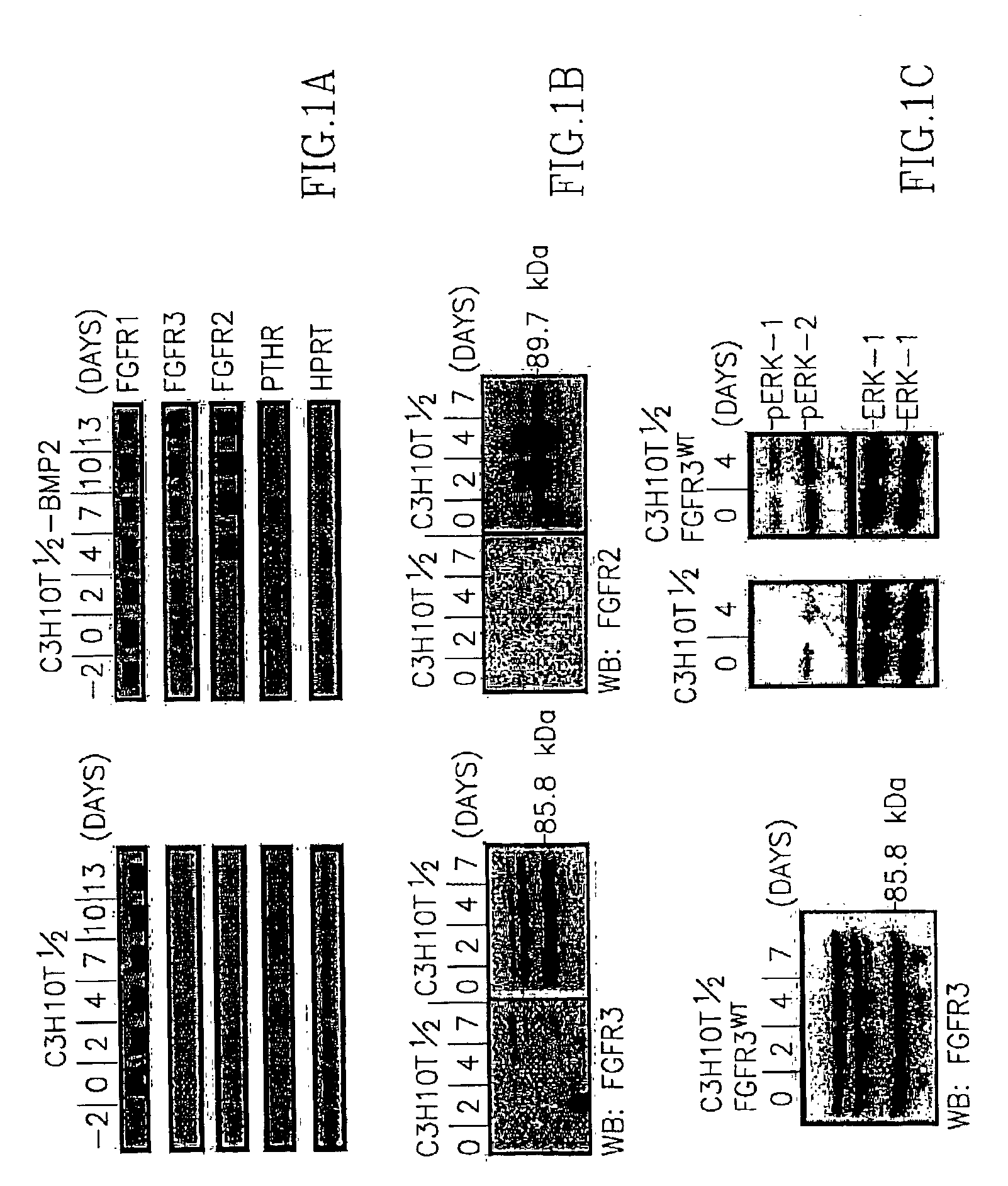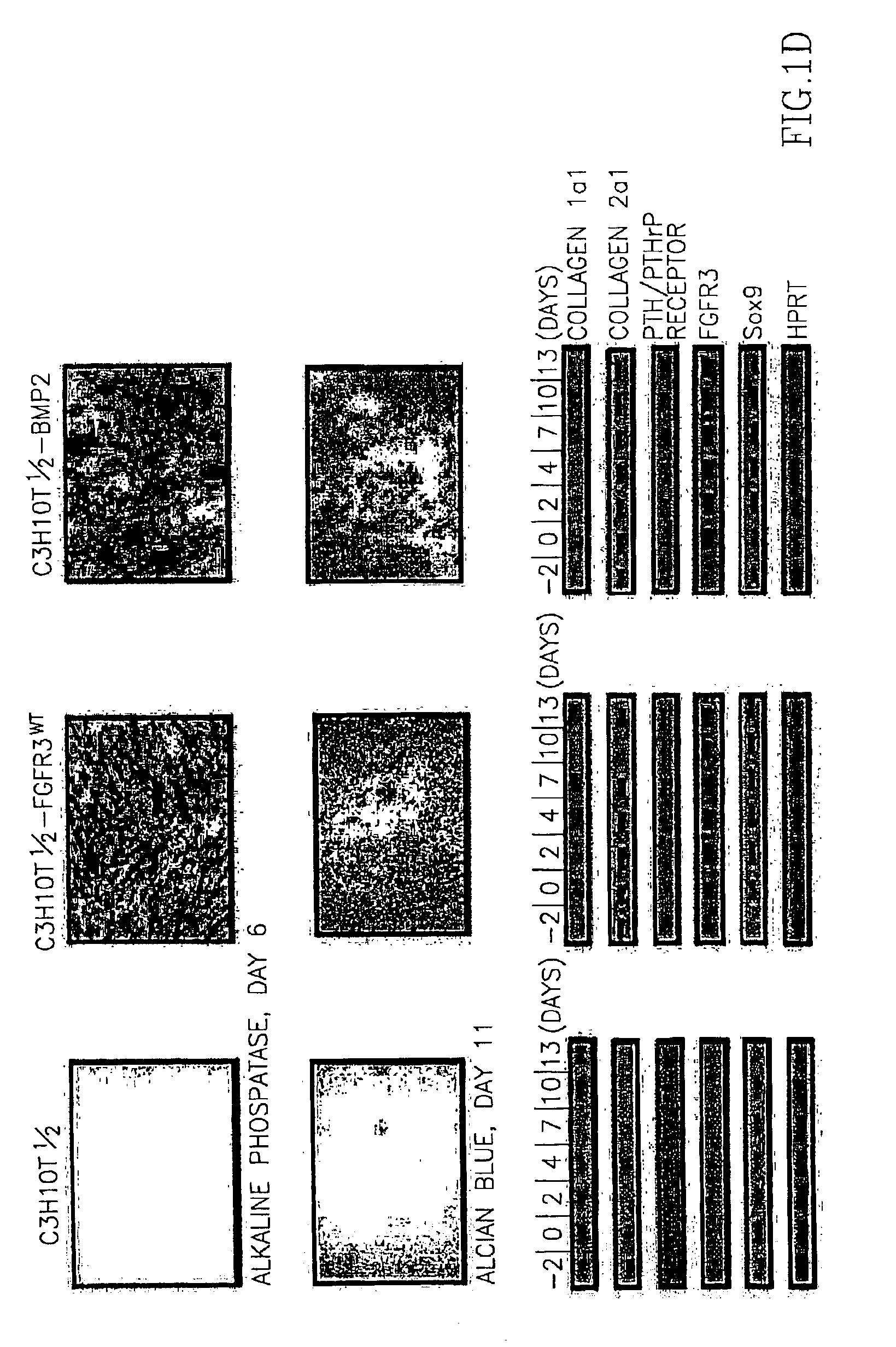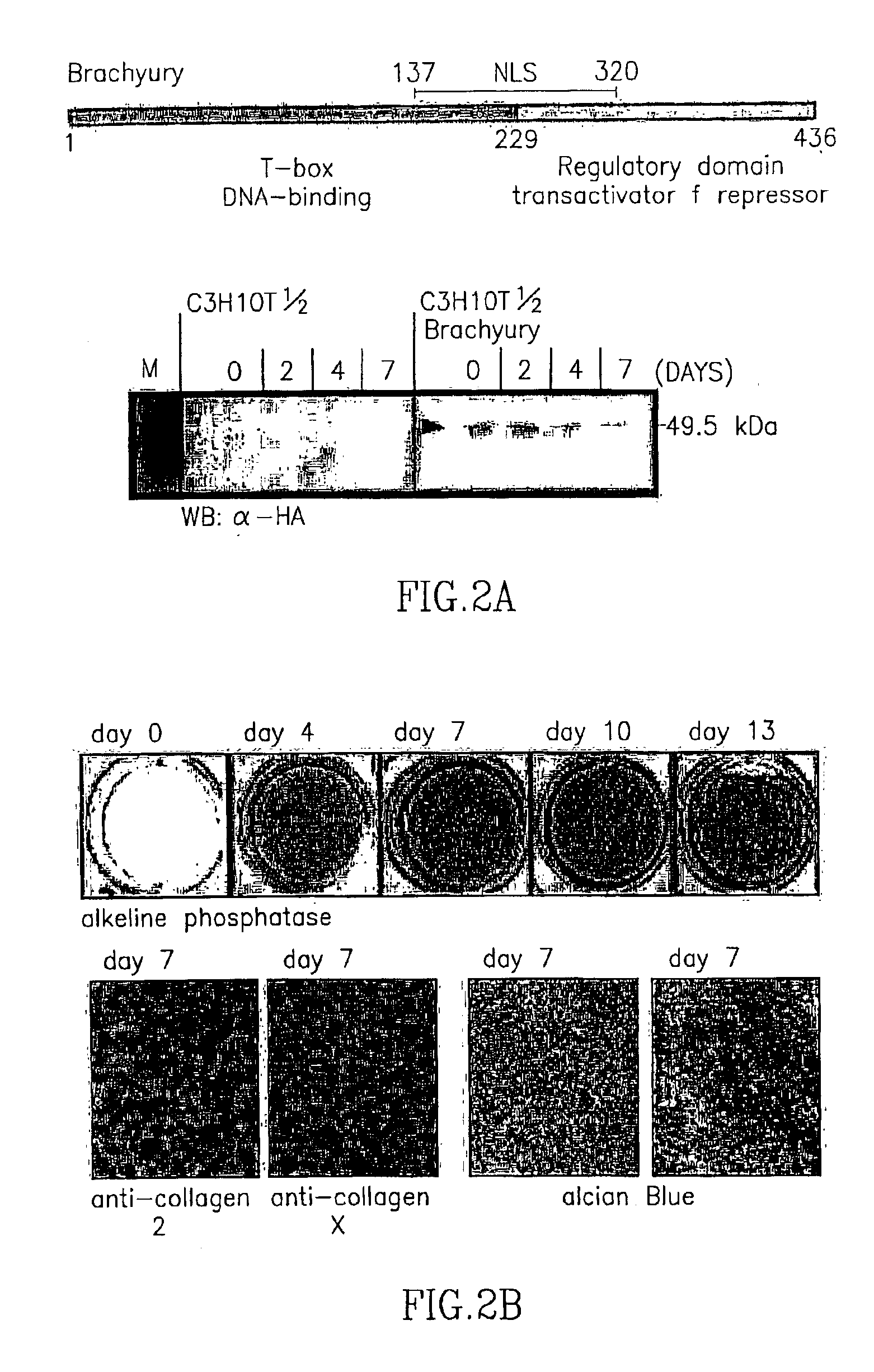Methods and compositions for enhancing cartilage repair
- Summary
- Abstract
- Description
- Claims
- Application Information
AI Technical Summary
Benefits of technology
Problems solved by technology
Method used
Image
Examples
example 1
[0110]BMP2-Dependent Chondrogenic Development in C3H10T1 / 2 MSCs Involves FGF-Receptor 3
[0111]During a substractive screen for BMP-regulated genes in recombinant BMP2-expressing C3H10T1 / 2 (C3H10T1 / 2-BMP2) cells upregulation of the Fibroblast Growth Factor Receptors 3 and 2 (FGFR3, FGFR2) was noted at both the transcriptional and protein levels (FIGS. 1a, c, respectively). These two receptor types exhibit different induction kinetics. FGFR3 is upregulated during early stages of cultivation in the stable C3H10T1 / 2-BMP2 line while FGFR2 shows a delayed response (FIGS. 1a, c). The fast upregulation of FGFR3 seems to be due to an immediate response to BMP2 since exogenously-added BMP2 mediated FGFR3 transcription in wild-type C3H10T1 / 2 cells in the presence of cycloheximide (FIG. 1b). In contrast to FGFR3 and FGFR2 is FGFR1 constitutivelly expressed in wild type and C3H10T1 / 2-BMP2 cells (FIG. 1a) while FGFR4 does not show any significant rates of expression (data not shown). Since FGFs an...
example 2
[0113]Forced Expression of the T-box Factor Brachyury Leads to Chondrogenic Development in C3H10T1 / 2 Mesenchymal Stem Cells
[0114]Brachyury has originally been described as the first member of a family of transcription factors that harbors a T-box as the DNA-binding domain. In order to assess whether the FGFR3-dependent upregulation of the T-box factor Brachyury in C3H10T1 / 2 might play a role in chondrogenesis Brachyury cDNA was expressed under the control of the murine phosphoglycerate kinase-1 (PGK-1) in mesenchymal stem cell line C3H10T1 / 2 to allow moderate expression levels of Brachyury (C3H10T1 / 2-Brachyury). The recombinant expression of Brachyury cDNA under the control of the murine phosphoglycerate kinase-1 (PGK-1) in MSCs (FIG. 2a) gave rise to efficient chondrogenic differentiation resulting in alkaline phosphatase positive cells (beginning at day 4) and Alcian Blue positive chondrocyte-like cells (at day 10 post-confluence; FIG. 2b). Three individual C3H10T1 / 2 clones were i...
example 3
[0115]Dominant-Negative Brachyury Interferes with BMP2-Dependent Chondrogenic Development in MSCs.
[0116]It was expected that Brachyury's DNA-binding domain (T-box, aa 1-229) without the associated regulatory domains (aa 230-436) should dominant-negatively (dn) interfere with endogenous Brachyury-mediated events in C3H10T1 / 2-BMP2 cells. A partial nuclear localization signal (NLS) which has been attributed to the T-box domain should allow a substantial nuclear accumulation (Kispert et al., 1995). The dominant-negative nature of the T-box domain was confirmed in DNA co-transfection assays performed in HEK293 T cells. This particular cell lines was used because expression levels are in general considerably higher in these cells than in C3H10T1 / 2. This cell line does not express Brachyury (data not shown). Exogenous Brachyury transactivated a construct containing two copies of the consensus Brachyury binding element (BBE) oligonucleotide fused to a minimal HSV thymidine kinase (TK)-minim...
PUM
 Login to View More
Login to View More Abstract
Description
Claims
Application Information
 Login to View More
Login to View More - R&D
- Intellectual Property
- Life Sciences
- Materials
- Tech Scout
- Unparalleled Data Quality
- Higher Quality Content
- 60% Fewer Hallucinations
Browse by: Latest US Patents, China's latest patents, Technical Efficacy Thesaurus, Application Domain, Technology Topic, Popular Technical Reports.
© 2025 PatSnap. All rights reserved.Legal|Privacy policy|Modern Slavery Act Transparency Statement|Sitemap|About US| Contact US: help@patsnap.com



